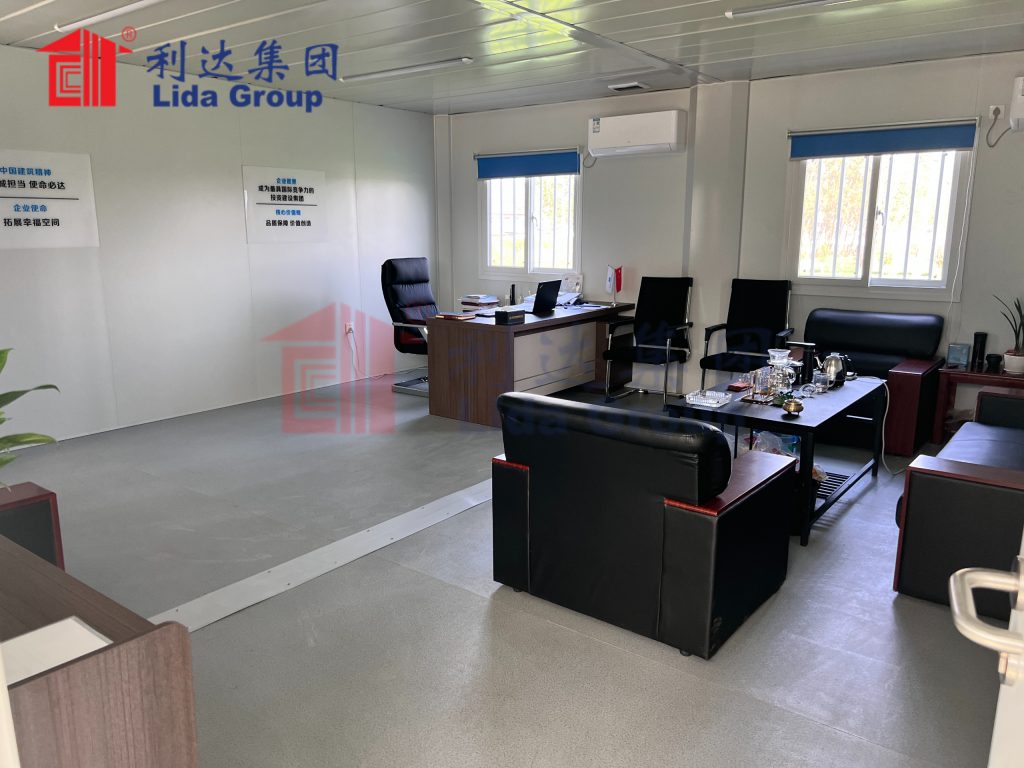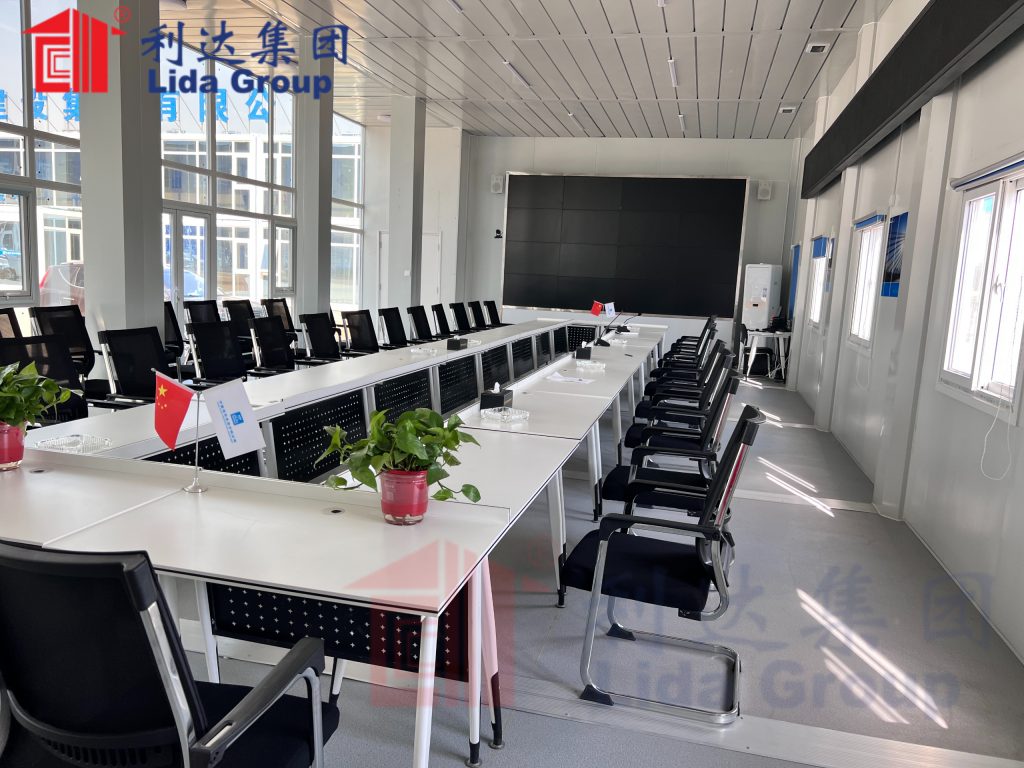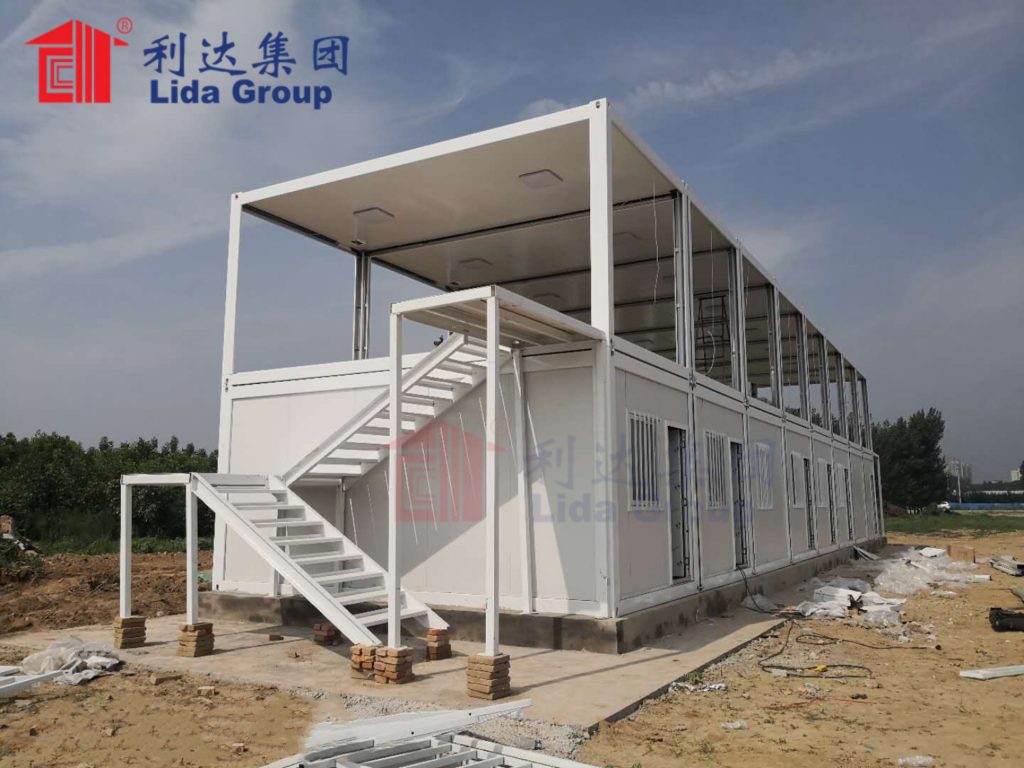A delegation of government housing and construction officials recently toured Lida Group’s flagship modular factory near Shanghai to observe the company’s cutting-edge automated processes for assembling prefabricated multifamily housing units at scale. The site visit aimed to evaluate how Lida’s industrialized building system approaches could help address severe affordable housing shortages faced by growing city populations worldwide.
As one of Chinese largest prefabricators, Lida Group has pioneered new assembly line techniques for mass-producing customizable modular housing components on an unprecedented scale. Their 1 million square foot facility operates as a integrated factory campus utilizing advanced robotics, digital manufacturing, and Just-In-Time inventory methods to standardized mass housing provision.
During the tour, officials observed various modules at different completion stages moving down the automated production line. Standardized floor, wall and roof cassettes are first fabricated offsite in a controlled process minimizing waste before being sequentially fitted with interior finishes, fixtures and technical systems. Electricians install pre-routed electrical, data and HVAC connections in pre-walled modules concurrently undergoing plumbing and drywall finishing.
According to Lida Group’s factory operations manager Zhao, maximizing automation both improves quality control through repeatability while dramatically boosting manufacturing throughput compared to conventional on-site construction. “Our goal is to replicate efficiencies achieved through scale in other mass manufacturing industries to help transform global housing construction practices keeping pace with rapid urbanization,” she explained.

Zhao noted floor cassettes including structure, insulation and wiring are fully completed every 4 minutes on the line. Wall panels of various standardized sizes likewise take only 8 minutes to complete. This allows stagger-starting of multiple modules to streamline assembly cycles and minimize bottlenecks. Once outfitted, completed module sections require just 12 workers to be lifted and stacked into place onsite within a few hours.
Given over 90% of the work occurs in controlled factory conditions disconnected from weather dependencies and site-specific challenges, Lida Group achieves a remarkable reduction in schedule risk and construction schedules. Zhao cited projects routinely delivered turnkey within 4-6 months versus 18-24 months using traditional methods – an imperative acceleration for densifying urban land limited by surrounding infrastructure.
“The modular process allows us to effectively pre-build entire building types on an inventory basis like vehicle assembly,” explained Lida Group CEO Mu who joined the factory tour. “When a developer orders a 100-unit apartment complex, they select from our modular packages and customize exteriors while interiors and core technical systems remain the same standardized design.”
Mu elaborated the company employs Building Information Modelling (BIM) integration to digitally pre-combine modules for off-site construction, packing and delivery to maximize efficiency of on-site assembly. Customizable 3D building models also allow clients to visualize and amend designs in real-time during the planning phase. Prefabricated developments can incorporate varying unit layouts and custom architectural features yet retain the faster schedules and predictability of production line manufacturing.
The process has found synergies with both private residential projects as well as affordable housing initiatives. By pre-certifying modular designs, governments streamline approvals and Lida helps nonprofit housing consortiums or municipalities procure volume housing deals at wholesale unit cost reductions passed directly to tenants through subsidization programs. Officials noted such partnerships could dramatically scale affordable housing production.
Delegation members were especially impressed by Lida’s vertically stackable modular concept now empowering high-density urban infill sites previously unsuitable for development. Utilizing end-stack connectors and a lighter steel exoskeleton frame, rows of modules constructed horizontally are lifted into place with cranes to create complete multi-story apartment blocks, mixed-use structures, or dormitory towers completed in a fraction of time.
While each floor cassette rises independently to allow phased scaling, integrated vertical risers for utilities or elevator cores maintain building code compliance. By standardizing floor dimensions and coupling interfaces, Lida can extend finished buildings upward repeatedly provided structural capacity allows – achieving slender densities rivaling high-rise structures at lower construction costs than traditional incremental site-built approaches.

“The stackable modular system helps cities utilize narrow lots, constrained sites or even formerly difficult topographies for housing that respects surrounding communities rather than disrupting them during lengthy builds,” observed one official. “It’s evident these automation-enabled approaches address priorities of reducing developer risk, lowering housing delivery timelines and enhancing predictability while lowering costs and environmental impact.”
The ability to seamlessly integrate multiple dwelling types, architectural styles and interior finishes within the same modular framework was also praised. Observing model container-based units, tiny homes and more traditional apartment flats all exiting the production line standardized yet customizable, delegates agreed the model could accommodating rapidly changing housing needs and demographics at a unprecedented scale worldwide.
Before departing the factory, questions arose around long-term building performance, regulatory challenges to market adoption as well as scalability of circular economy ambitions to reuse and remanufacture modular components at end-of-life. Mu assured materials selected like lightweight steel meet stringent code requirements and fire ratings while maintaining durability for 50+ year lifespans.
He also emphasized Lida’s ongoing research into disassembly protocols, condition assessment technologies and partnership with recyclers developing secondary materials markets able to recover 99% of all modular material streams for remanufacturing once structural integrity diminishes. “We aim for a new generation of buildings which close material loops to preserve finite natural resources rather than deplete them through linear construction economies of the past,” Mu affirmed.
Further policy discussions are ongoing to align permitting pathways recognizing pre-approved modular designs and promoting broader utilization of automation, but delegation members left impressed by the transparency and optimism demonstrated towards sustainable housing goals. Consensus emerged that streamlining modular adoption represents a crucial strategy for cities facing land, budget and housing delivery shortfalls amid climate adaptation challenges on the horizon.

With over 15,000 housing units constructed annually and capacity projected to reach 100,000 units within a decade, Lida’s model factory exemplifies how advanced construction techniques can help solve global humanitarian issues at a scale previously inconceivable. As next generation ‘megaprojects’ leverage automation to regenerate urban cores where populations continue concentrating, modular assembly line approaches may prove transformative for rapidly scaling sustainable housing solutions worldwide.

Related news
-
Lida Group unveils new line of prefabricated and sustainable container apartment units designed for rapid construction and affordable living.
2024-04-02 11:17:58
-
Developers Convert Decommissioned Shipping Containers into Micro-Homes Using Standardized Modification Kits from Lida Group for Workforce Affordable Housing Community
2024-04-03 16:17:56
-
Researchers Subject Insulated Modular Shipping Container Assemblies Produced by Lida Group to Hygrothermal Testing and Analysis to Validate Durability for Affordable Housing
2024-01-02 17:51:01
contact us
- Tel: +86-532-88966982
- Whatsapp: +86-13793209022
- E-mail: sales@lidajituan.com


